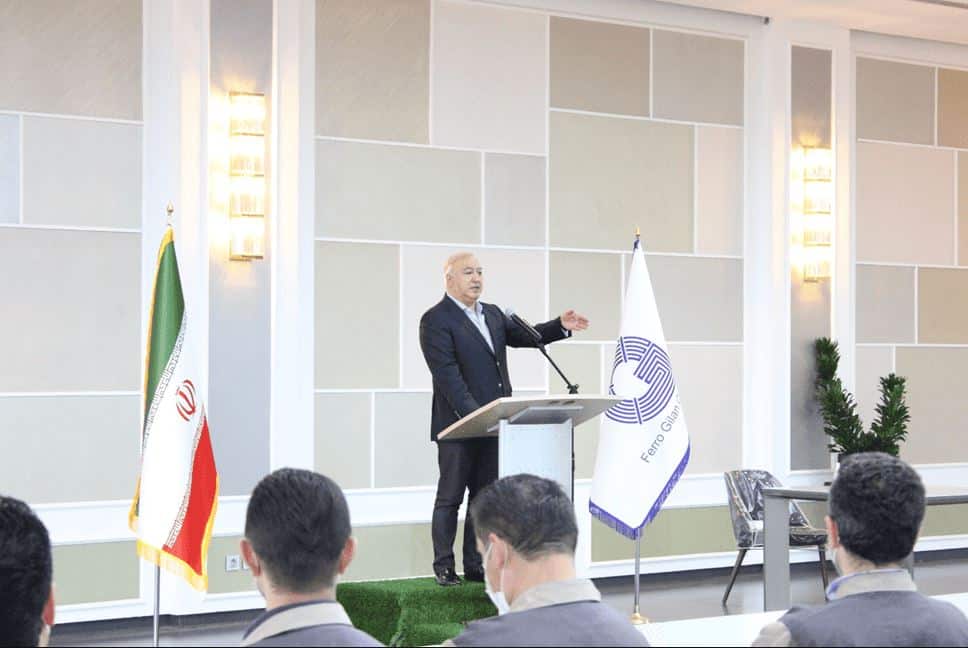Top Entrepreneur, Rasoul Danialzadeh, Shares Insights on Boosting Steel Sector Competitiveness against Domestic and Foreign Competitors Intense competition has arisen among suppliers of …
Intense competition has arisen among suppliers of various products due to the imperatived to effectively address diverse needs. On the other hand, various factors have impacted the competitive environment in most markets. As a result, gaining a suitable market share now requires possessing competitive advantages. To remain competitive in the expansive steel products market, it is necessary to establish a strong presence and gain a comprehensive understanding of all its dimensions. This will enable companies to gain a competitive edge both domestically and globally, and ultimately increase their market share. The manager of the largest private-sector steel products manufacturing group in the country, Rasoul Danialzadeh, was interviewed regarding this matter.

Question: What is your definition of competition in economic activities?
Competition is a widely recognized concept that takes on various forms in social interactions and holds significant significance. This concept has been derived from the economic dimension, to fulfill market needs and cater to the supply and demand of a particular product. In the contemporary era, a plethora of needs exist, each requiring distinct goods and services to fulfill. The emergence of diverse demands has spurred manufacturers to produce a variety of products to cater to these requirements. Achieving this goal involves navigating through a series of steps and procedures collectively known as the “supply chain”. In other words, the supply chain is a series of interconnected actions that culminate in the production of a product for market consumption. Competition arises at the very outset of market entry, according to this definition. The establishment or utilization of a robust, cost-effective, and efficient supply chain is crucial in enhancing competitiveness.
Question: What variables affect competitive ability?
The marketing mix is composed of various competitive elements, including price, product, location, distribution channel, processes, costs, and more. These elements are present in every market and play a crucial role in determining the success of a business. The quantity of said elements varies across different types of mixes and can be regarded as a competitive factor depending on the nature of the business. This is deemed a prerequisite for any enterprise. Focusing on influential variables can lead to a more competitive edge, according to experts. In short, focusing on influential variables can enhance competitiveness.
Question: What is your perspective on the state of competition within the steel industry? Additionally, what specific factors do you believe are crucial for bolstering competitive power and gaining an advantage in domestic markets?
Competition within the steel industry, much like any other business sector, is a crucial and apparent concern. Having a comprehensive understanding of the industry, including competitors and their strengths and weaknesses, is crucial for any successful business. It’s important to have a clear understanding of current and future needs, as well as a thorough knowledge of your own company’s strengths and weaknesses. Keeping up-to-date with information from all areas of the organization is essential, as is staying informed about market trends and monitoring supply and demand. Compliance with local laws and regulations is also critical, particularly for businesses operating in international markets. Building strong relationships with suppliers and being flexible in improving production conditions are key factors in achieving success. Besides, the ability to discover and adopt new technologies is essential for staying ahead of the competition. Finally, having a proper comprehension of forthcoming environmental standards and various other factors is an essential requirement for competitiveness in this industry. The determination of investment direction and identification of competitive advantages in both domestic and foreign markets are based on these prerequisites. Competitive advantage refers to a distinguishing characteristic that sets a company apart from its competitors, which it may lack or be unable to capitalize on. In the realm of competition, the significance of possessing a competitive advantage is akin to the significance of ground forces on a battlefield. The steel industry’s competitive advantages lie in the availability of affordable and timely raw materials, access to low-cost energy sources, and a skilled workforce. Regarding the present circumstances, the significance of these variables surpasses that of other factors. In my opinion, focusing on these issues can lead to increased competitiveness in both domestic and international markets in the short term.

Question: To enhance competition in global markets, what factors should be taken into account?
The steel industry is facing a critical juncture as it grapples with the environmental demands of the future and the need to develop new technologies. To ensure its survival and long-term growth, the industry will have to undergo fundamental changes that will transform the global competitive landscape. Let me outline several key points on the matter at hand. The pressing issue of climate change and the imperative to curb greenhouse gas emissions, which carry severe consequences, has gained increasing significance in recent times. The current practices of major industries worldwide are now facing a formidable challenge. Industries are facing a critical juncture where they must either adapt their approach to incorporate environmentally-friendly technologies or risk being phased out of the production cycle and global competition. The steel industry is among the industries being referred to. The steel industry’s reliance on non-renewable energy sources and fossil fuels is a direct contributor to carbon emissions. The steel industry accounts for approximately 25% of global carbon emissions, representing a significant portion of the total carbon released into the Earth’s atmosphere. The steel industry is set to face significant limitations shortly, as a result of a substantial reduction in its share. This will require the industry to undertake major overhauls in its production methods or to seek alternative sources of energy. The transition to renewable energy sources from conventional fuels is an undeniable and inescapable phenomenon, all be it not one that will occur in the immediate future. Experts warn that fossil fuel resources are rapidly depleting and their harmful impact on the environment is reaching critical levels. As a result, there is growing pressure to shift away from these non-renewable sources of energy and towards more sustainable alternatives. With the increasing affordability of renewable energy sources, many predict that the end of the fossil fuel era is imminent. Now the question is: What might now happen to the nations and significant economies that depend on this kind of energy for their industries? By paying attention to these challenges, the prospect of long-term competitiveness is redefined.
